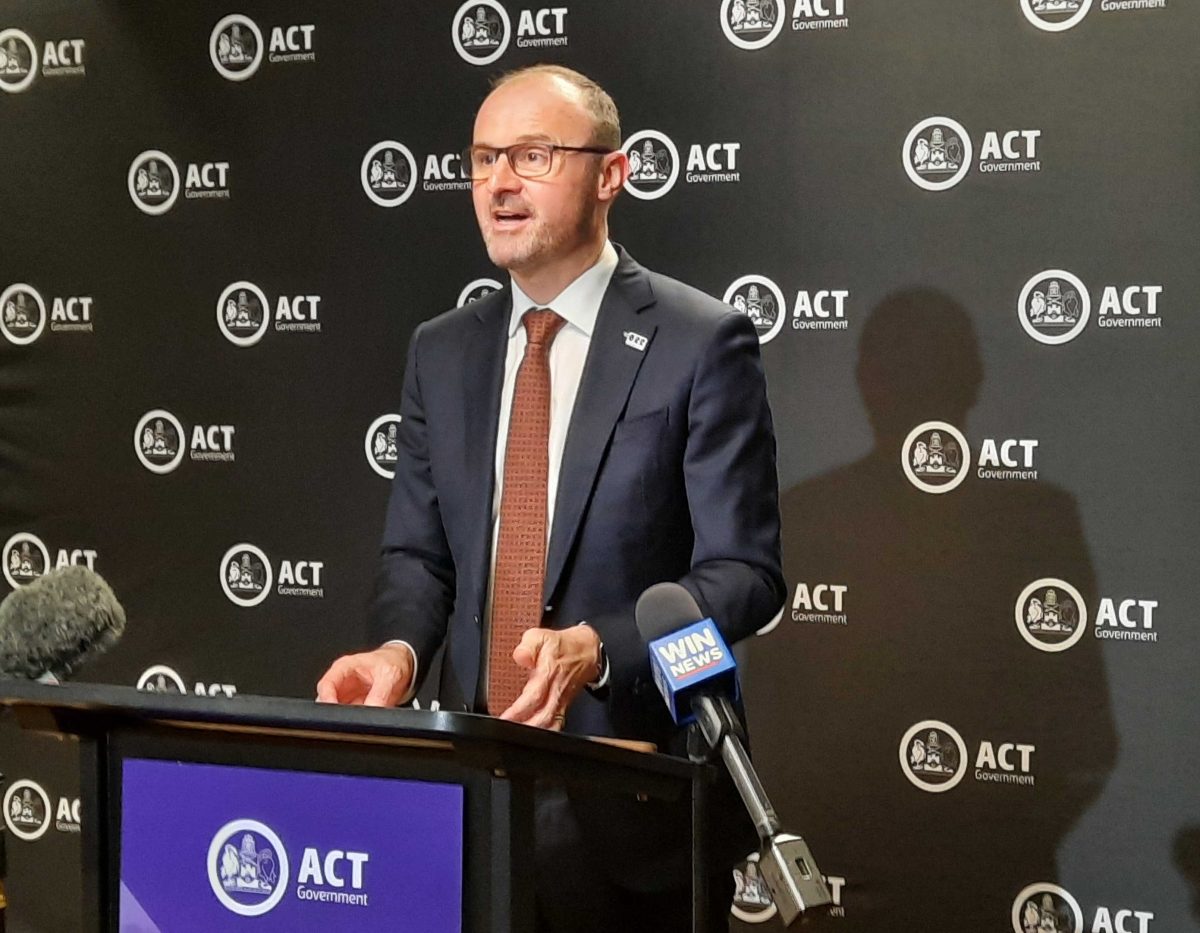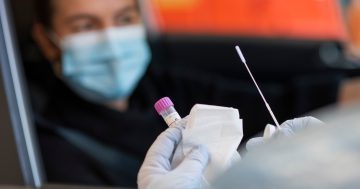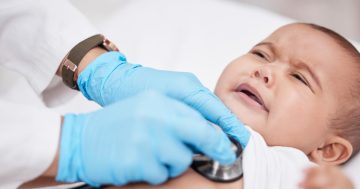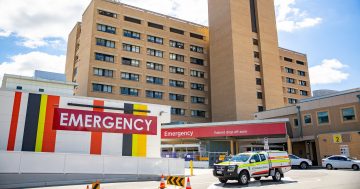
Chief Minister Andrew Barr has been pushing for an extension of the $750 Pandemic Leave Disaster Payment which has now been endorsed by National Cabinet. Photo: Ian Bushnell.
UPDATED 3:10 pm: The ACT has recorded 1,104 new COVID-19 infections in the 24 hours to 8 pm yesterday, including 689 identified by PCR and 415 by rapid-antigen tests (RAT).
It comes as the proportion of cases attributed to re-infections continues to rise.
Today, there are 156 people in hospital, including 4 in intensive care and 3 being ventilated.
Yesterday, there were 135 people in hospital with the virus and the Territory recorded 1208 new infections.
Since the pandemic began, 177,058 cases of COVID-19 have been reported in the ACT.
The double-dose vaccination rate for the ACT’s five-plus population remains 97.4 per cent and 77.6 per cent of residents aged 16 and older have now received a booster.
Of ACT residents aged five to 11, 80.6 per cent have received one dose of the vaccine.
Prime Minister Anthony Albanese has bowed to pressure and agreed to extend the pandemic leave disaster payments until 30 September.
The bill for the scheme will be split 50-50 between the federal and state and territory governments.
“This is a fair way … going forward, all of the states and territories, as well as the Commonwealth, understand that emergency payments are just that,” Mr Albanese said.
“[The payments] can’t continue forever given the physical constraints that are on governments at all levels. But that this is an appropriate measure going forward.
“These measures are important. We will get through this.”
It’s expected the scheme will cost just under $800 million.
People can apply for the payments from Wednesday (20 July) through Services Australia.
“The Commonwealth and the states and territories remain absolutely committed to working together, collaboratively, to support the health response,” he said.
“All of the premiers and chief ministers, as well as the Commonwealth, understand that we need to get the health outcomes right in order to protect people’s health and also to protect our economy.”
Since announcing the payments would be scrapped, the Federal Government had been criticised by unions and health experts who feared the decision would mean COVID-19-positive people would be forced to work rather than isolate.
The $750 payment is available to casual workers who cannot access sick pay.
Chief Minister Andrew Barr yesterday said he believed an extension of the scheme should be considered.
A snap National Cabinet meeting was brought forward to this morning so state and territory leaders could be briefed on the BA.4 and BA.5 wave.
That wave, which is expected to worsen in coming weeks, is putting increasing pressure on the country’s healthcare systems.
Mr Albanese also announced the Commonwealth would create a new Telehealth item so GPs can spend longer with their patients to assess their suitability for oral antiviral treatments for COVID-19.
According to ACT Health’s latest weekly epidemiological report, re-infections with COVID-19 now account for three per cent of all reported cases.
Health experts have warned the current circulating sub-variants of Omicron are more infectious than previous strains and can evade immunity garnered from both vaccination and previous infection.
Chief Health Officer Dr Kerryn Coleman said on Monday (11 July) that more people would likely be infected multiple times, but predicting the amount was next to impossible.
The Territory’s health authorities also expect that changed re-infection and testing requirements, which came into effect earlier this week, will drive an uptick in identified cases.
Recovered cases who develop symptoms are required to test for the virus 28 days after they are cleared from their initial quarantine period.
ANU infectious diseases expert Professor Peter Collignon told Region last week it would prove difficult to measure re-infections accurately because many people who catch the virus for a second time are likely to record minimal symptoms and may be unlikely to get tested.
Professor Collignon stressed this would not be the case for everyone, however.
Authorities have urged people to remain at home if unwell and test if any symptoms develop.
The report also confirmed the BA.5 subvariant of Omicron is now well and truly dominant in the Territory. More than 70 per cent of genomically sequenced cases last week were BA.5.
Only two weeks ago, that number was as low as 33 per cent.
The remaining samples were either BA.2 or BA.2.12.1 or BA.4.
Around 7 per cent of all positive PCR samples are being genomically sequenced by Health.
Overall, case numbers increased for the fourth week in a row in the last reporting period. In the week ending 10 July, 8789 infections were reported – up from 8329 in the previous week.
The rolling mean also increased dramatically from 900 to 1000 to 1100 to 1200 per day.
Interstate, NSW has reported 38 deaths overnight and 11,082 new cases of COVID-19.
Victoria has reported eight deaths overnight and 9982 new cases of COVID-19.
Yesterday, across Australia, more than 43,491 COVID cases were reported and 66 deaths. In total, 10,582 people have died with COVID across the country.


















